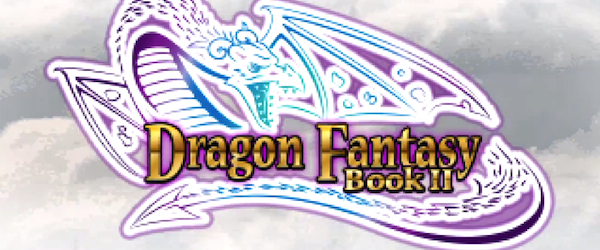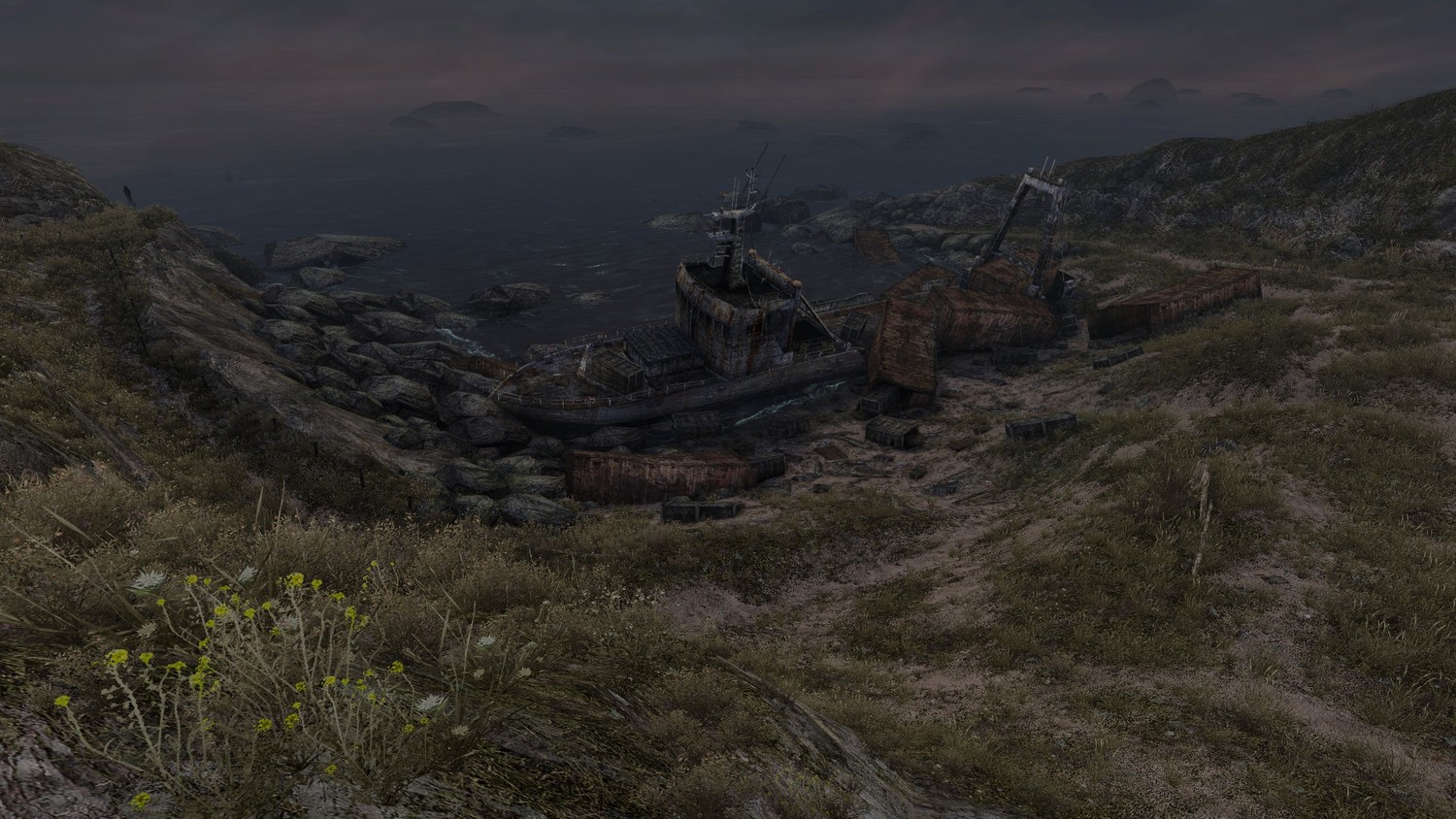
Review: Dragon Fantasy Book II
Posted by Andrew Brewer on September 24th, 2013 | 0 Comments | Tags: Dragon Fantasy Book II
Dragon Fantasy Book I released earlier this year in April on PSN, and was one that I was looking forward to since its announcement. With its retro 8-bit styled graphics and Dragon Warrior/Quest inspired gameplay I enjoyed every minute of the faux nostalgia inducing gameplay. So when I sat down with Book II I was more than excited to see where my adventures with Ogden and crew would lead me.
Where Book I seemed to take its main inspiration from my favorite NES RPG, Dragon Warrior, Book II has moved ahead a console generation taking inspiration from some of the best RPG’s to grace the Super Nintendo, while still offering an experience that sets it apart. Gone are the random first person fights of Book I, instead each location is occupied by enemies and a battle happens once you make contact with them. Other enemies can join the in-progress battle too if they spot you fighting, which is a nice touch. While the game remains turned based all the character and enemy skills have an area of effect so that the placement of enemies will often determine the best skills to use. This makes the battles a lot more strategic and fun, though I did tend to mainly rely on the same few skills throughout.
The battle system isn’t the only thing changed though as the game got an upgrade to 16-bit graphics. Ogden, The Woodsman, Anders and all the pirates got a nice visual makeover while still remaining recognizable to their look in Book I. Well that is besides Ramona who has shed a lot of her clothes for some unknown reason. The environments are also nicely detailed and have great looking foreground effects for weather which look really good. The upgrade to the graphics is accompanied by a soundtrack by the very talented Dale North that fits into the game perfectly and does a good job of setting the mood for each location and event. This is also a soundtrack that tends to stick with you, for more than a few times I have had songs creep into my head after putting the game down.
In the short non-canonical Intermission chapter in Book I crafting and monster gathering were introduced and I was glad to see them make a return in Book II. Most of the items you find littered throughout the world or received from defeating monsters are used to craft new items and equipment at workbenches in item shops. Unfortunately while I liked having the ability to craft things I never really found myself scavenging much or grinding for materials as there weren’t a lot of useful equipment recipes that where better than what you could find in the shops. I would have liked to have seen more recipes in the game to take advantage of the feature.
As I mentioned above the game has included monster gathering giving you the ability to add almost every enemy to your party using capture nets or a specific characters skill. This certainly brought out the “got to catch them all” effect in me while playing; making sure that every enemy I came across was added to my ever growing list of companions. Though I enjoyed the monster hunting there wasn’t really a lot of difference between each of them as they all have fairly similar starting stats, all use the same equipment, and besides some different starting moves they all learn the same skills. But in saying that, it’s still impressive to have the ability to supplement your party with over 50 of them.
While Book I was a fairly linear experience Book II has added both quests and optional areas to explore to extend the game play. Quests can be gained from many different NPC’s all across the land of Tundaria (who all strangely know who you are) who request you either kill a monster, capture a monster, or retrieve an item. Quests add a nice distraction to the game and I enjoyed them at first but overall I found them kind of shallow and the rewards, comprising of a little money and a couple common items, not really worth the effort. I have the same complaint with the optional areas. While they all vary in look and the enemies that occupy them, they are mostly act as small locations to complete quests in. There are a couple that offer optional story elements and an optional boss which really add to the games experience, it’s just too bad that this wasn’t seen in the rest of the optional locations.
The games story picks up shortly after the ending of Book I where you find Ogden and a host of familiar faces on their way to Tundaria. Thankfully the game has once again been infused with humor throughout with everything from character discussions, equipment descriptions, books, and enemy flavor text telling some kind of joke or referencing pop culture, video games, or even parodying the JRPG genre itself. This led me to have a smirk on my face pretty consistently and even laughing out loud a couple of times. The guys at Muteki know how to strike a good balance between the humor and offering the player an interesting story that often hints at some of the more intricate details rather than coming right out and saying them. If you haven’t played Book I though you might want to take the time to go through that before jumping into Book II. While you could probably pick up and understand most of the story there are many references to what happened in the first game that could be confusing if you haven’t experienced it.
While the humor made a return, another one of my favorite aspects did not: the challenge. In Book I I always had to pay attention to what I was doing as the fear of death was always present, and there were times when I needed to tackle a dungeon multiple of times before making it all the way through or I had to do a little grinding to get that fancy piece of armor. Besides the last area I experienced none of that in Book II, having the ability to go through most levels with just using basic attacks and almost always having more than enough money to afford new equipment at towns. While I know a lot of people complained about the difficulty in Book I, I loved the challenge and I am disappointed it never made a comeback here.
If my only issues with the game were only with the difficulty and side quests you would be seeing a better score above. Unfortunately in my playthrough of the game I experienced an overabundance of bugs and glitches. Thankfully during the writing of this review a patch was released that did tackle some of the issues. Though I didn’t go through the game again to see if all the issues I experienced throughout were fixed I did spend more time to see that some of the problems still exist, like stuttering when running in areas/battles (though a lot better than what it was), inaccessible chest and door, NPC’s not talking, and graphical issues on the world map. Muteki are already hard at work on a second patch for the game which will hopefully tackle more of these, but it’s still disappointing that my experience with the game was brought down because of bugs.
While I may seem a little down on several aspects of the game don’t mistake that for not liking it, as I quite enjoyed adventuring in the 16-Bit land of Tundaria. The new battle system is speedy and fun, with the story being a great continuation of the original that really makes me excited to see how it will conclude in Book III. In a genre that is severely lacking on PSN Dragon Fantasy Book II, while not perfect, is a game that classic JRPG fans should have a lot of fun with.
A copy of this game was provided by the publisher for review purposes. For more info on our review policy click here. The PlayStation Vita version of the game was used for this review.
General Info
- Developer: Muteki Corporation
- Publisher: Muteki Corporation
- Release Date: September 2013
- Players: 1
- Ratings: ESRB: E10+
Score:
What I Like:
- The upgraded graphics and weather effects
- New fast paced battle system
- Skills/magic having an area of effect
- Monster catching
- Interesting story
- Excellent humor once again
- Great soundtrack that fits the game
What I Dislike:
- Crafting system, while interesting, is not that useful
- Most optional areas feel empty
- Quests get a bit repetitive and rewards are not that good
- Lack of challenge
- Overabundance of bugs/glitches




